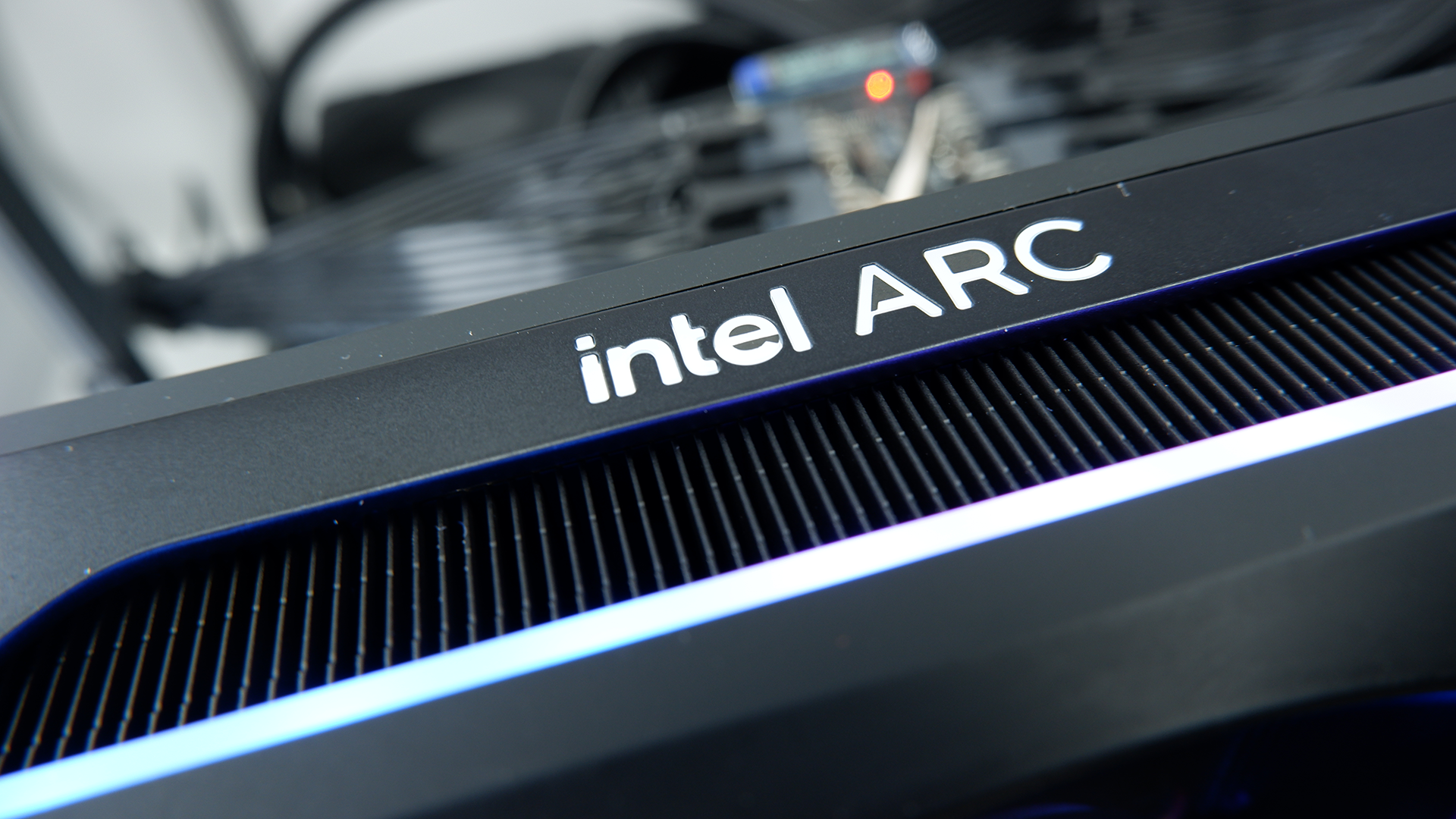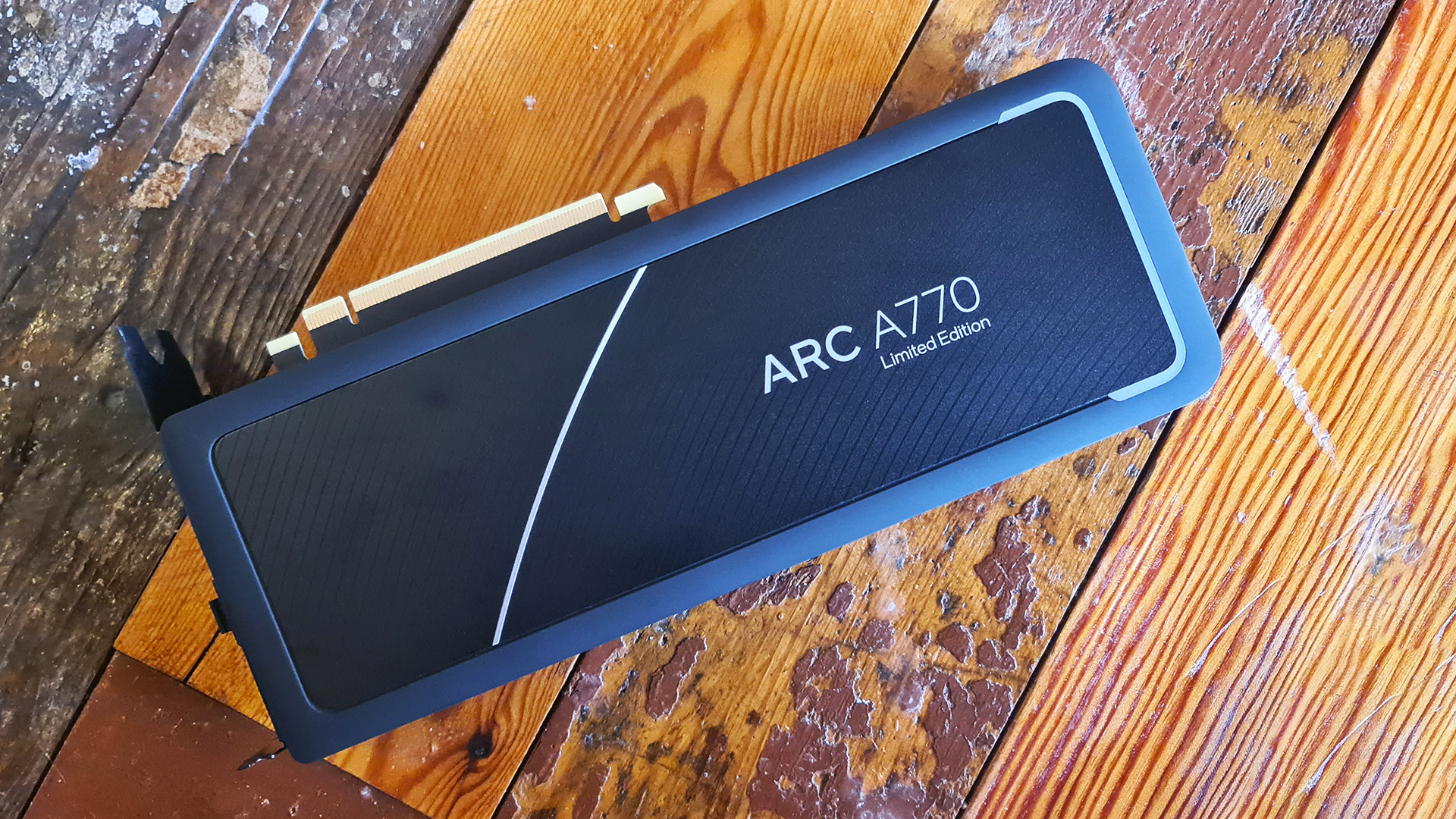Hot GPU rumour time: Intel may follow AMD in just focusing on the mainstream market with its next-gen Battlemage chips
And if that's the case, it leaves the mega bucks market entirely to Nvidia.

We're barely two weeks into 2024 but the latest rumours surrounding the next generation of GPUs are already in full swing. And the claim this time is that Intel's next graphics architecture, Battlemage, won't be competing against the likes of the RX 7900-series or RTX 4080, but may instead focus on mainstream sales. As that's where the bulk of GPU sales are anyway, it would hardly be totally surprising if true, but it'll be disappointing if we have to wait another two years before there's a real third contender for the GPU halo crown.
That is what's been claimed by YouTube channel RedGamingTech, at least. An earlier video of theirs suggests the biggest Battlemage chip would have 56 Xe cores, up to 3GHz for the boost clock, and as much as 116MB of L2 cache connected to a 256-bit memory bus.
Now, it's suggesting that while the earlier core details were correct, the cache and memory wasn't. Instead, the top-end Battlemage GPUs would have a 192-bit memory bus, 8MB of L2 cache, and 512MB of 'Adamantine' cache. Ada-mada-what? Believe it or not, that's a genuine thing and was unveiled in an Intel patent we've written about before. It's a Level 4 cache layer for CPUs but one that can also be accessed by the integrated GPU.
So what's it doing in a discrete GPU? Well, it would act like AMD's Infinity Cache in its RDNA 2 and RDNA 3 chips, helping to reduce the number of times the VRAM needs to be requested for data.
However, despite all of that, RedGamingTech is also suggesting that there's a good chance that Intel won't actually bother releasing this chip, because the profit margins aren't going to be particularly good. Instead, it will focus on delivering a much smaller GPU, one with 40 Xe cores, with 18MB of L2 cache, no L4 cache, and a 192-bit memory bus.
Intel's Arc A770 already has 32 Xe cores, 16MB of L2 cache, and a 256-bit memory bus, so if any of the above claims is true, then unless the mainstream Battlemage chip has a higher clock speed or better Xe cores, it's not going to much of an improvement.
We know that Battlemage is the GPU architecture used in the forthcoming Lunar Lake CPUs, a small, low-power design for laptops. Hardware Times claims that for this processor, Intel has expanded the Vector Engines (XVE) in the Xe cores. So instead of being like Alchemist's SIMD8 design (i.e. they process 8 threads at a time), Battlemage is SIMD16.
Keep up to date with the most important stories and the best deals, as picked by the PC Gamer team.

AMD, Intel, and Nvidia all use different terminology when they talk about their GPU's shaders but they all essentially do the same thing, i.e. one AMD Stream Processor or one Nvidia CUDA core carries out operations on one thread. So if that rumour is true, then one Battlemage XVE would be equivalent to two Alchemist XVEs.
However, that doesn't mean the Xe cores themselves are twice the size. All of the Alchemist GPUs have 16 XVEs per Xe core, but Intel could well drop that to 8 for Battlemage. This wouldn't be a massive change because this is how the Xe cores in Intel's HPC GPUs are currently arranged.
The chip in the A770 is pretty big, though, with a die size of 406mm², although it is manufactured on TSMC's older N6 process node.
Making the XVE units twice as wide, as well as increasing the amount of L2 cache, will require more transistors, and even if a desktop Battlemage doesn't pack in all that many Xe cores, it will still be a big ol' chip. Or rather, it would be if it was still made on N6.

Best CPU for gaming: The top chips from Intel and AMD.
Best gaming motherboard: The right boards.
Best graphics card: Your perfect pixel-pusher awaits.
Best SSD for gaming: Get into the game ahead of the rest.
Change that to N5 or perhaps even N3, then you've got a far smaller, far more power-efficient GPU. However, with Battlemage still a long way off, pretty much anyone can claim anything they like about the architecture, as there's no hardware evidence in the form of leaked benchmark results to suggest one direction over another.
Regardless of what the architecture is like, it's a little disappointing to read about another GPU manufacturer ceding the top-end market to Nvidia, at least for one more year. AMD is rumoured to be doing this with its next-gen RDNA 4 chip and if all of this comes to pass, the green team will have the ultra high-end sector entirely to itself.
One thing's for certain, though. 2024 is going to be a great year for rumours and GPU shenanigans, with Intel up against AMD's RDNA 4 and potentially even Nvidia's Blackwell. Let the battle(mage) commence!

Nick, gaming, and computers all first met in 1981, with the love affair starting on a Sinclair ZX81 in kit form and a book on ZX Basic. He ended up becoming a physics and IT teacher, but by the late 1990s decided it was time to cut his teeth writing for a long defunct UK tech site. He went on to do the same at Madonion, helping to write the help files for 3DMark and PCMark. After a short stint working at Beyond3D.com, Nick joined Futuremark (MadOnion rebranded) full-time, as editor-in-chief for its gaming and hardware section, YouGamers. After the site shutdown, he became an engineering and computing lecturer for many years, but missed the writing bug. Cue four years at TechSpot.com and over 100 long articles on anything and everything. He freely admits to being far too obsessed with GPUs and open world grindy RPGs, but who isn't these days?

